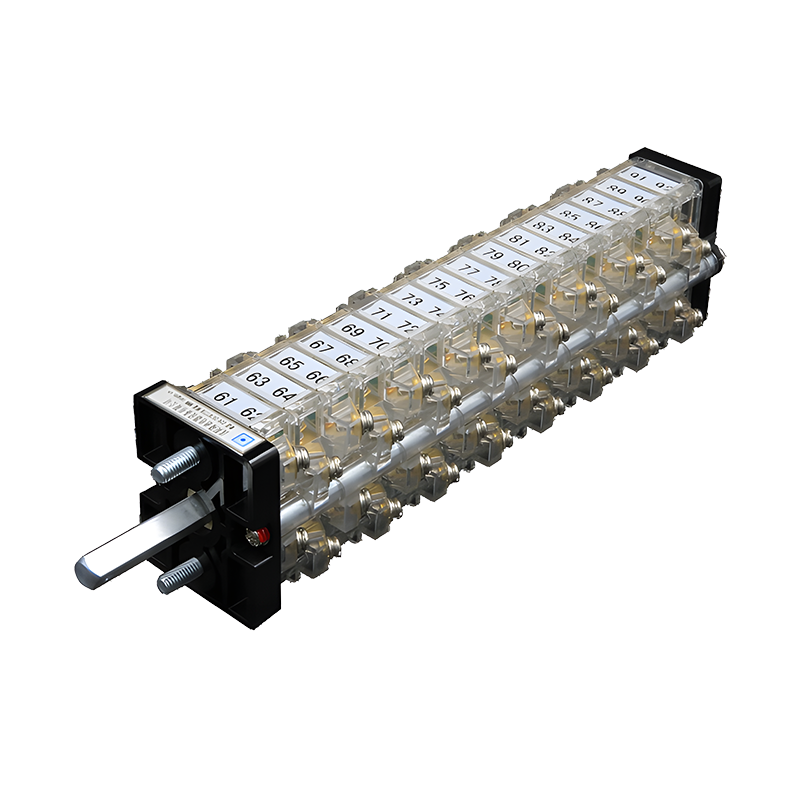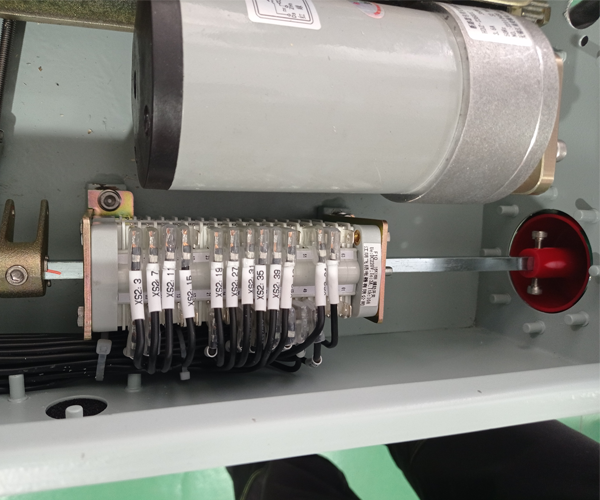

Title: The mysterious assistant of the circuit breaker: the working principle and application of the auxiliary switch
Release time:2023-12-04
Title: The mysterious assistant of the circuit breaker: the working principle and application of the auxiliary switch
In the power system, the circuit breaker is a vital device. Its main function is to cut off the current when a circuit fault occurs and protect the circuit and equipment from damage. However, there is a mysterious assistant that, although not as conspicuous as a circuit breaker, plays an important role at critical moments, and that is the auxiliary switch. So, how does the auxiliary switch work? What are the applications? Let's unveil its mysteries together.
First, let's understand how the auxiliary switch works. The auxiliary switch is an electromagnetic-operated switch. Its main components include electromagnets, contacts and springs. When the current in the circuit exceeds the set value, the electromagnet will generate enough magnetic force to attract the contacts, causing the contacts to close, thus cutting off the circuit. When the current returns to normal, the magnetic force of the electromagnet disappears, the contacts are opened under the action of the spring, and the circuit resumes power supply.

The working process of the auxiliary switch seems simple, but the principle behind it is very complicated. It needs to accurately control the size of the current to ensure that the current can be cut off in time when a circuit failure occurs, and to ensure stable operation of the circuit under normal conditions. This requires the auxiliary switch to have high precision, high reliability and fast response characteristics.
Next, let's look at the application of auxiliary switches. Auxiliary switches are widely used in various power systems and electronic equipment, such as transformers, motors, generators, distribution boxes, elevators, air conditioners, etc. In these devices, the auxiliary switch mainly plays the roles of overload protection, short circuit protection and undervoltage protection.
For example, in a transformer, an auxiliary switch can prevent the transformer from overload operation and avoid damage to the transformer due to excessive current. In the motor, the auxiliary switch can cut off the power supply when the motor is short-circuited or overloaded to protect the motor from damage. In generators, auxiliary switches can cut off power when the generator voltage is too low to prevent the generator from overheating.

In addition, auxiliary switches can also be used to realize automatic control of equipment. For example, in an elevator, the auxiliary switch can automatically switch the power supply according to the elevator's operating status to achieve smooth start and stop of the elevator. In air conditioners, the auxiliary switch can automatically adjust the power supply according to the operating status of the air conditioner to achieve energy-saving operation of the air conditioner.
In general, although auxiliary switches are not as conspicuous as circuit breakers, they play an important role in power systems and electronic equipment. It is the mysterious assistant of the circuit breaker and an important guarantee for the safe and stable operation of the power system and electronic equipment.
In the power system, the circuit breaker is a vital device. Its main function is to cut off the current when a circuit fault occurs and protect the circuit and equipment from damage. However, there is a mysterious assistant that, although not as conspicuous as a circuit breaker, plays an important role at critical moments, and that is the auxiliary switch. So, how does the auxiliary switch work? What are the applications? Let's unveil its mysteries together.
First, let's understand how the auxiliary switch works. The auxiliary switch is an electromagnetic-operated switch. Its main components include electromagnets, contacts and springs. When the current in the circuit exceeds the set value, the electromagnet will generate enough magnetic force to attract the contacts, causing the contacts to close, thus cutting off the circuit. When the current returns to normal, the magnetic force of the electromagnet disappears, the contacts are opened under the action of the spring, and the circuit resumes power supply.

The working process of the auxiliary switch seems simple, but the principle behind it is very complicated. It needs to accurately control the size of the current to ensure that the current can be cut off in time when a circuit failure occurs, and to ensure stable operation of the circuit under normal conditions. This requires the auxiliary switch to have high precision, high reliability and fast response characteristics.
Next, let's look at the application of auxiliary switches. Auxiliary switches are widely used in various power systems and electronic equipment, such as transformers, motors, generators, distribution boxes, elevators, air conditioners, etc. In these devices, the auxiliary switch mainly plays the roles of overload protection, short circuit protection and undervoltage protection.
For example, in a transformer, an auxiliary switch can prevent the transformer from overload operation and avoid damage to the transformer due to excessive current. In the motor, the auxiliary switch can cut off the power supply when the motor is short-circuited or overloaded to protect the motor from damage. In generators, auxiliary switches can cut off power when the generator voltage is too low to prevent the generator from overheating.

In addition, auxiliary switches can also be used to realize automatic control of equipment. For example, in an elevator, the auxiliary switch can automatically switch the power supply according to the elevator's operating status to achieve smooth start and stop of the elevator. In air conditioners, the auxiliary switch can automatically adjust the power supply according to the operating status of the air conditioner to achieve energy-saving operation of the air conditioner.
In general, although auxiliary switches are not as conspicuous as circuit breakers, they play an important role in power systems and electronic equipment. It is the mysterious assistant of the circuit breaker and an important guarantee for the safe and stable operation of the power system and electronic equipment.
